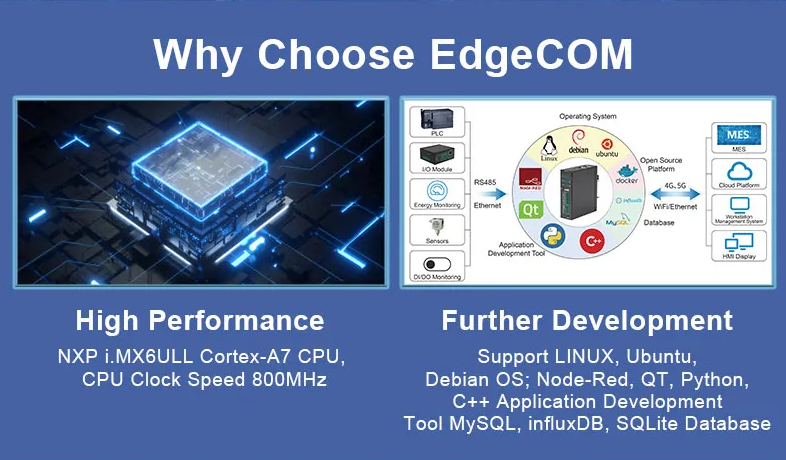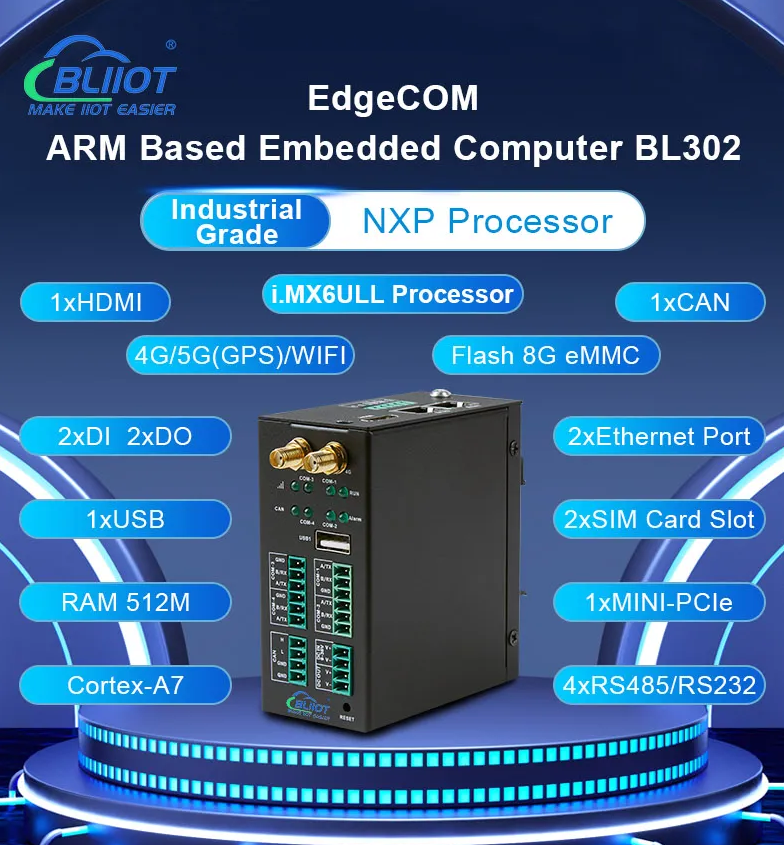Smart Building Controler EdgeCOM with 2 Network Port, Supports Secondary Developmen and Internet of Things Gatement
Views : 12466
Author : Jeakie
Update time : 2023-03-23 11:44:12
Smart Building Controler EdgeCOM with 2 Network Port, Supports Secondary Developmen and Internet of Things Gatement

With the development of the Internet of Things, the building control system has become an indispensable part of people's lives. In order to better meet market demand, developers are constantly exploring new technologies, new hardware and new solutions. Among them, the SECONDARY Development IoT gateway has become an important trend in the building control system.
Secondary Development IoT Gatement refers to a IoT gateway with development interfaces and development tools. It can connect smart hardware, sensors and other devices through IoT technology, and then build a building control system to realize the functions of human -machine interaction, automation control, and information interaction. Through Secondary Development, users can make autonomous programming and develop various applications to meet personalized needs.

In the Secondary Development IoT gateway, the design model of the two mesh ports has become a popular solution. The advantage of this design pattern is that it can use one mesh to connect to the inner network, and the other mesh can be used to connect to the external network. The internal network and the external network can be relatively independent, thereby ensuring the security and stability of the data.
Another important feature of Secondary Development IoT gateway is to support Docker containers and Linux systems. Docker container is a lightweight virtualization technology that can pack the application and all dependent libraries together to form an independent container. This container can quickly run in different environments, so as to achieve rapid application of applications. The Linux system is an open source operating system that can run on various hardware platforms and has the advantages of high reliability and good security.
Through the Docker container and Linux system, developers can easily deploy applications in Secondary Development Internet of Things gateway. Developers only need to pack the application into a Docker image, and then install the Docker engine on the gateway. After the installation is completed, you can run the application on the gateway to achieve various functions of the building control system.
In addition, Secondary Development IoT gateway also supports SDK, which makes it easier for applications to develop and debug in applications. SDK is a development toolkit that can provide various development tools, code libraries, documents and other resources, which is convenient for developers to write applications. Developers only need to program according to the interface provided by SDK to develop their own applications.
In short, Secondary Development IoT network has gradually become a standard in the building control system because of its openness and flexibility. It can help developers quickly build various intelligent applications and further promote the progress of building control systems. In the future, the Secondary Development IoT network will play a role in more and more intelligent scenarios, bringing more business opportunities and social benefits.

With the development of the Internet of Things, the building control system has become an indispensable part of people's lives. In order to better meet market demand, developers are constantly exploring new technologies, new hardware and new solutions. Among them, the SECONDARY Development IoT gateway has become an important trend in the building control system.
Secondary Development IoT Gatement refers to a IoT gateway with development interfaces and development tools. It can connect smart hardware, sensors and other devices through IoT technology, and then build a building control system to realize the functions of human -machine interaction, automation control, and information interaction. Through Secondary Development, users can make autonomous programming and develop various applications to meet personalized needs.

In the Secondary Development IoT gateway, the design model of the two mesh ports has become a popular solution. The advantage of this design pattern is that it can use one mesh to connect to the inner network, and the other mesh can be used to connect to the external network. The internal network and the external network can be relatively independent, thereby ensuring the security and stability of the data.
Another important feature of Secondary Development IoT gateway is to support Docker containers and Linux systems. Docker container is a lightweight virtualization technology that can pack the application and all dependent libraries together to form an independent container. This container can quickly run in different environments, so as to achieve rapid application of applications. The Linux system is an open source operating system that can run on various hardware platforms and has the advantages of high reliability and good security.
Through the Docker container and Linux system, developers can easily deploy applications in Secondary Development Internet of Things gateway. Developers only need to pack the application into a Docker image, and then install the Docker engine on the gateway. After the installation is completed, you can run the application on the gateway to achieve various functions of the building control system.
In addition, Secondary Development IoT gateway also supports SDK, which makes it easier for applications to develop and debug in applications. SDK is a development toolkit that can provide various development tools, code libraries, documents and other resources, which is convenient for developers to write applications. Developers only need to program according to the interface provided by SDK to develop their own applications.
In short, Secondary Development IoT network has gradually become a standard in the building control system because of its openness and flexibility. It can help developers quickly build various intelligent applications and further promote the progress of building control systems. In the future, the Secondary Development IoT network will play a role in more and more intelligent scenarios, bringing more business opportunities and social benefits.
Related News
Read More >>















